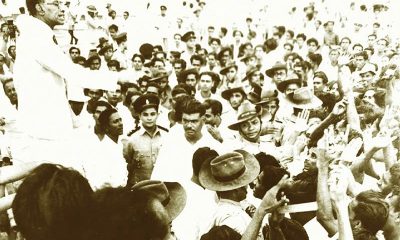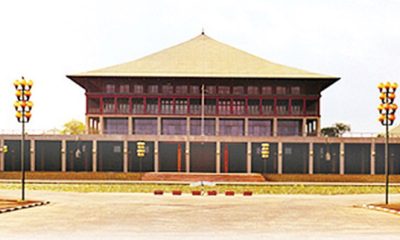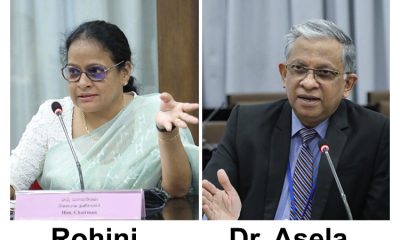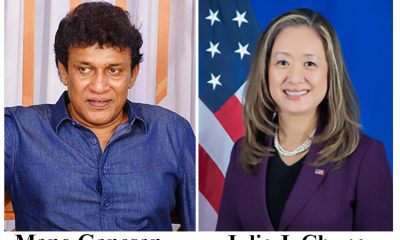Features
Visa Debacle: Fixing what ain’t broken
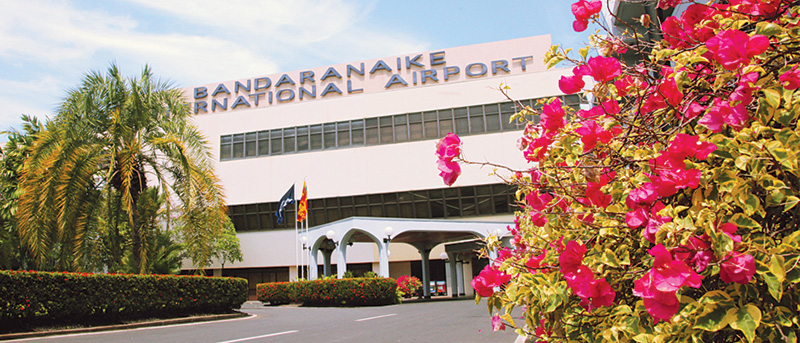
by Dr Sirimewan Dharmaratne,
former Senior Analyst, HMRC, UK
There is a famous saying ‘If it ain’t broke, don’t fix it. Sri Lanka seems to be the exception to this rule. This is no more laid bare than the current debacle with tourist visas. Most countries that want tourist dollars have visa free entry or a minimal fee. A visa is a means for controlling access and a fee act as a further deterrent. It is a form of a user fee that is designed to restrict entry. Therefore, if you want tourists to come to your country and spend money, simple economics says not to charge an entry fee.
Reciprocal Requirements
The justification seems to be centred around the fact that Lankans pay much higher fees to this company when they travel compared to what visitors pay to come to Sri Lanka. This justification alone typifies why Sri Lanka is where it is now. The underlying issues here is not what Sri Lankans have to pay when they travel abroad but what tourists have to pay when they come to Sri Lanka. This is what those who are actually making a living from the tourism is concerned about. Most developed countries have stringent visa requirements for citizens of less developed countries for obvious reasons. But those countries do not have reciprocal requirements. This is not because they don’t have pride, but because they need the money that tourism brings in. It makes good business sense.
They make more money by allowing well-off tourists to come freely and spend rather than by selling visas.
Elated by the recent surge in tourist arrivals, in the eyes of the government, Sri Lanka is now a ‘cannot do without’ destination. Therefore, the first response is to increase the price of everything, starting with a visa fee and let others have a piece of the pie as well. Having this overassessment about the value of the country has led to various forms of rip-offs, some of which have been widely circulated in social media. Further, one has only to check hotel rates and other accommodation to realise how the rates have gone up astronomically. Increase of visa fee appears to be following the same misguided thinking. The truth, however, is that Sri Lanka is considered a ‘cheap’ destination for an ‘exotic’ holiday. It does not particularly standout in any aspect, such as beaches, nature, wildlife or food compared to other similar destinations. As Sri Lankans, we all have a visceral value of the country, but in the eyes of tourists, it is one of the many destinations that they can spend their money on and not a place to be visited at any cost.
Demand for Travel
Access costs determined the demand for a destination. When there are competing destinations in terms of characteristics, a savvy, erudite traveller will naturally select a destination that has lower access cost. While there is some flexibility in certain access costs, such as airfares, visa costs are regarded as a waste that does not add anything to the value of a trip. Most Western tourists look at it in disdain because they believe, rightly or wrongly, developing nations should be facilitating their patronage and not restrict it. Therefore, the issue is not what Sri Lankans have to pay when they travel overseas, but what tourists have to pay when they come to Sri Lanka compared to other South Asian destinations.
Sri Lanka had a somewhat high US$50 visa, which most visitors acquiesced. According to SLTDA’s own departure survey, most visitors stay 21 days or less with most frequent length-of-stay being 14 or 21 days. Therefore, it is likely that in excess of 95% of the visitors would have obtained this visa. This option that was mysteriously excluded, appears to have been reinstated. However, what in fact is the correct fee is sketchy.
If the proposed service fees are added, then the actual cost to the visitor could be as high as $75, which is a 50% increase. This is where knowledge of some basic economics would have been helpful. If you raise the price of goods or service without a discernible increase in quality, the demand will go down.
May it be for eggs, bread, fuel or visas, this is one of the basic economic principles that actually work. On the other hand, there is evidence that while the visa fee is US$50, only US$40 is paid to the government with the remaining US$10 is paid to the company as a ‘service’ fee. If this is the case, then it is absolute madness. While the visitors don’t care how the money is divided, it is imbecilic to hand over US$10 from each visitor for a service that was done for free just a month ago. The thinking and reasoning behind this defeat any form of rationality and can only be attributed to a perfidious, self-serving motive.
Uniqueness and elasticity
How much the visits would go down depends on the amount of increase and availability of substitutes. These two together show how elastic the demand would be.
This is where Sri Lanka has no particular advantage compared to other countries in the region. There are plenty of close substitute destinations if tourists want to visit South East Asia, which offer visa free arrival or a minimal visa fee. Apart from that, for European tourists, a whole new market has opened up in Eastern Europe, Andalucía, Türkiye and in the former Soviet republics, where holidays are ridiculously cheap. Majority of these countries do not have visa requirements for Western European tourists, which is their target market.
Sri Lanka also does not have any ‘must see’ places, such as Machu Picchu, Great Wall or Angkor Wat. There is no compelling reason for a visitor to specifically select Sri Lanka that would justify the additional access cost. What is on offer is fairly prosaic, and comparable to many other countries that offer similar experiences.
The bottom line is despite the euphoria surrounding the new found tourism goldmine, Sri Lanka is easily substitutable and therefore the demand is likely to be very elastic. If this nonsensical visa fee continues to exist, then a significant reduction in visitation can be expected, especially those with families. The loss will not be to the tourists but to Sri Lanka.
Logic of Outsourcing
With Sri Lanka being a popular outsourcing destination, it is hard to comprehend that there is no firm that could perform this task. In fact, a local entity seems to have manage well up to 16 April, and through the peak of arrivals during the winter months. Why their service no longer suffices is a mystery. Further, according to reports, Sri Lankan IT professionals could have done and were doing the work for a fraction of the cost. What is the compelling reason to change the status quo? There have been no reports of major infringements or capacity issues. So why fix something that was not broken?
Length of Contract
This is another aspect of this arrangement that does not make any sense. Why get into a 16-year contract when the world of IT and AI is fast changing? There are already unmanned immigration counters in many airports. Most documents and applications are now machine processed. It is predicted that most back-office work will become redundant in the near future. This company need not make huge investment on infrastructure to take this additional work on for Sri Lanka. Such a large company should be able to easily absorb this work without significant additional investment. Therefore, there is no reason to ask or agree to a contract for the next 16 years! This is an egregious decision on the part of the government, or is there some other in-win agreement that does not benefit the country?
Money Trail
Another dubious aspect of this contract is how the visa revenue is transferred to Sri Lanka. Apparently, when visas were processed locally, the daily take was sent to the Treasury at the end of each day. With the new arrangement, it is understood that the daily revenue is sent to a Dubai account of the company and transferred to Sri Lanka two days later, sans service charges. Based on an average of 5,000 daily visitors and a US$50 visa fee, this means maintaining an account with a minimum daily balance of US$250,000 in an overseas bank using Sri Lankan visa fees, but that does not belong to Sri Lanka. This guaranteed money could be used for various reasons, apart from the interest that could accrue on a daily basis, such as for overnight lending. The bottom line is that other than the undeserved service fee, the company is placed to generate more income from the financial arrangement and contract that Sri Lanka has seemingly sleepwalked into.
Security
The justification that it is a global company which processes visas in many countries is irrelevant. In any country, by law, one has to first look for local contractors before looking overseas. There is no evidence this procedure has been followed. But the more compelling issue is national security. Although, it is now said that foreign nationals would not man visa counters, they will have access to vast amounts of information and data that could be used for the benefit of a foreign nation. Although visa issuance may be done by Sri Lankans, back-office staff could be selectively biased in forwarding applications. This could create problems for the Sri Lankan governments from friendly nations if they see a pattern of bias. These concerns have been already raised by countries that are crucial for Sri Lankan foreign relations.
Prognosis
This change does not pass any logic that could justify such a monumental change. It appears to have been done in an ad hoc manner without doing a proper economic analysis or any other analysis relating to viability, security or economic development. There will definitely be a drop in visitations as there won’t be free entry for citizens of any country, even those who enjoyed that benefit earlier. What is most likely to suffer is family visits, because a potential increase in access cost of $300 to an average family of four would be a significant shock.
If the process is more convoluted, which requires submitting further documentation other than just passport information, it will be a further deterrent. All this will have a negative impact on the visitation rates that are now envisaged by those who are actually keeping Sri Lanka tourism going. There will be a corresponding impact on the local economy.
Currently Sri Lanka only enjoys a measly 15% repeat visitors, most of whom may even not be bone fide tourists. This is compared to nearly 40% repeat visitors in a destination like Barbados, which has no visa requirement for European or North American tourists. How a country, which has absolutely nothing over Sri Lanka has achieved this feat needs to be understood. It is definitely not by making visitors unwelcomed at the port of entry. Sri Lanka needs to rethink where they are going with tourism in the future and not kill the proverbial ‘goose that lays the golden eggs.’
Features
“Independent” Prosecutor’s Office: Myth and Reality
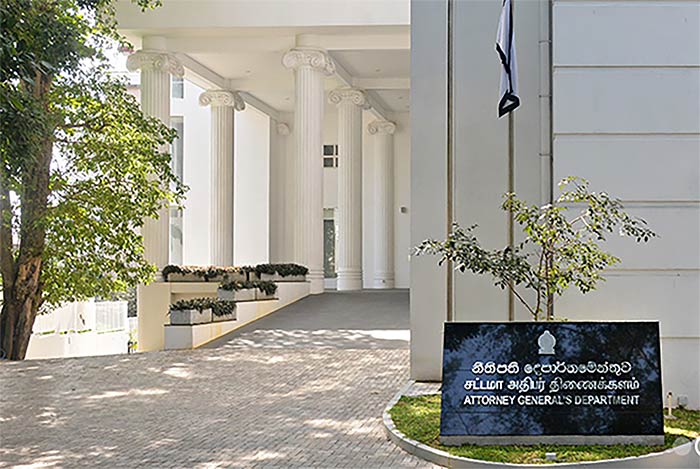
 By Professor G. L. Peiris
By Professor G. L. Peiris
D. Phil. (Oxford), Ph. D. (Sri Lanka);
Quondam Visiting Fellow of the Universities of Oxford, Cambridge and London;
Former Vice-Chancellor and Emeritus Professor of Law of the University of Colombo.
I. A Cornerstone of the Legal System
The institution of criminal proceedings is of vital concern to the public. Irrespective of the outcome of proceedings, subjection of a citizen to criminal litigation is fraught with grave consequences, including psychological trauma and impairment of social reputation, quite apart from the expenditure incurred in defending a criminal action.
The law, therefore, goes to considerable lengths to ensure that recourse to criminal proceedings is the sequel to an informed and well-structured process which includes careful consideration of available evidence in a spirit of independence and detachment, far removed from partisan considerations.
II. The Role of the Attorney-General
In our legal system this responsibility belongs to the Attorney-General: it is for him to bring his mind to bear on the entirety of material emanating from police investigations and to make a dispassionate judgment whether the evidence at his disposal, in the surrounding circumstances, warrants the commencement of criminal proceedings.
The solemnity of this burden is underlined by the traditional formulation, in decided cases in our country as well as in other jurisdictions, that the Attorney-General, in performing this function, acts in a quasi-judicial capacity.
This calls for a clear separation of his mindset from that appropriate to the discharge of his other responsibilities. The principal law officer of the Republic, he is the chief advisor to the Government of Sri Lanka, and it frequently falls to his lot to defend, before the courts, senior representatives of the government in Fundamental Rights, writs and other proceedings.
Nevertheless, it is a sacred and inviolable principle that, when it comes to deciding whether criminal proceedings should be launched or, when once begun, should be discontinued, against any defendant or group of defendants, this decision should be demonstrably bereft of any tinge of political or other extraneous element.
This is one of the core values of the system of criminal justice in our country and, indeed, an indispensable pillar of the Rule of Law.
III. Ample Scope of Prosecutorial Discretion
A pivot of our law is the principle of vires or jurisdiction, which requires that a statutory power must necessarily be exercised by the authority on which it is conferred by the legislature.
This is the rationale of the concept of prosecutorial discretion vested in the Office of Attorney-General. Discretion to determine the sufficiency of grounds to institute a prosecution or forward an indictment is that of the Attorney-General alone, and any usurpation of that discretion strikes at the very foundation of the system.
IV. Limiting Criteria
This does not mean, however, that the Attorney-General’s discretion is total or absolute, and altogether beyond the reach of the courts.
It is a salutary feature of our law that Sri Lankan courts, buttressed by judicial experience elsewhere, have formulated a series of criteria which operate as the limits of this discretion and enable intervention, with due restraint, in a limited category of situations.
A trilogy of judicial pronouncements by the Court of Appeal of Sri Lanka(Sandresh Ravi Karunanayake v. Attorney-General CA/Writ/441/2021; Duminda Lanka Liyanage v. Attorney-General CA/Writ/323/2022); Nadun Chinthaka Wickramaratne v. Attorney-General CA/Writ/523/2024) have rendered yeoman service to our law in this regard. The value of this approach lies in its essential sense of balance.
These judgments, by Sobhitha Rajakaruna J., now establish with clarity the frontiers of judicial review in respect of prosecutorial discretion of the Attorney-General.
The applicability of judicial review, in this context, has been accepted unequivocally by our courts: Victor Ivan v. Sarath Silva, Attorney-General (1998) 1SLR 340.
Its ramifications straddle a variety of settings. Where, for instance, the initiation of criminal proceedings is entirely unsupported by any evidentiary basis, the indictment may be impugned in judicial review, by the writ of certiorari. In the relevant academic literature, in particular the writings of Professor Sri William Wade, it is identified as a jurisdictional flaw, in that action in the absence of evidence is considered to have been taken without jurisdiction.
Similarly, prosecutorial discretion exercised by the Attorney-General may be vitiated by a range of factors including plainly discernible bias indicative of mala fides, patent error, consideration of irrelevant matters or failure to consider relevant material, grave procedural illegality or irregularity during the decision-making process – blemishes which, severally or in combination, may amount to abuse of process and, therefore, a potential miscarriage of justice.
Recent trends in Commonwealth law suggest scope for expansion of the ambit of judicial review on the broad ground of palpable unreasonableness (in terms of the well-known Wednesbury test), but this is an extension to be effected sparingly.
While these grounds admit of adequate flexibility in relation to judicial review, there is need for uncompromising insistence on the exclusion of any form of political intervention, or even a well-founded suspicion of it, in the interest of preserving public confidence in the integrity of the prosecutorial process.
V. Contemporary Developments
In recent weeks there has been widespread interest in policy perspectives, and timely changes in the law, in this field.
These developments provide the backdrop to the media statement by the Ministry of Justice on 10 February regarding the proposed establishment of an “Independent Prosecutor’s Office”. What is contemplated, as an initial step, is the appointment of an “Expert Committee” to prepare a Concept Paper on which the views of civil society and the public will be invited.
The composition of the proposed Committee has been announced. It will consist of “1. The Attorney-General or two nominees of the Attorney-General; 2. The Secretary to the Ministry of Justice; 3. A senior judge in the judicial service; 4. The President of the Bar Association of Sri Lanka or his nominee”.
While a committee, so constituted, may be appropriate for the preliminary task of suggesting the outlines of the concept, its personnel, clearly, cannot be involved in operationalising the idea, as it moves forward. The Secretary to the Ministry of Justice is a political functionary, subject to control by the Executive; a member of the Judiciary can play no part in decisions as to the suitability of instituting prosecutions; defending counsel in criminal prosecutions will be drawn from the unofficial Bar.
Sri Lanka had, at one time, a Director of Public Prosecutions (DPP). The experience of the Crown Prosecution Service in the United Kingdom offers valuable guidance. The Government’s proposal, however, seems to go beyond the appointment of a Director and to envisage a comprehensive prosecutorial mechanism coexisting with the Office of Attorney-General.
VI. Critical Policy Issues
A mere change of nomenclature offers no more than a superficial and unconvincing solution. The experience of the DPP in our country was not an altogether happy one and, in any case, lasted only a short time. If susceptibility of the Attorney-General’s Office to political pressure is the core issue, it is hardly circumvented by the proposed supplementary mechanism.
Many structural issues naturally arise: What are the lines of demarcation contemplated? The new Office, if it is to serve a useful purpose, must obviously enjoy substantial independence from the Attorney-General, but a complete severance of the nexus, in terms of coordination, is unrealistic.
What safeguards, not explicitly spelt out in relation to the Attorney-General’s Office, are intended to apply to the proposed new Office? Will the Office of the Independent Prosecutor be served by members of the Attorney-General’s Department? If so, how will clarity be achieved in the delineation of reporting obligations? How will overlapping and interlocking lines of authority be dealt with? Since it has been made clear that the Attorney-General’s Office per se, will survive the proposed innovation, will there be some measure of erosion of the Attorney-General’s constitutionally entrenched functions? If this is the case, a piecemeal approach will not be feasible.
These are complex issues which will no doubt engage the intense interest and vigilance of the public, as the proposed reforms move forward.
Features
Rani’s struggle and plight of many mothers
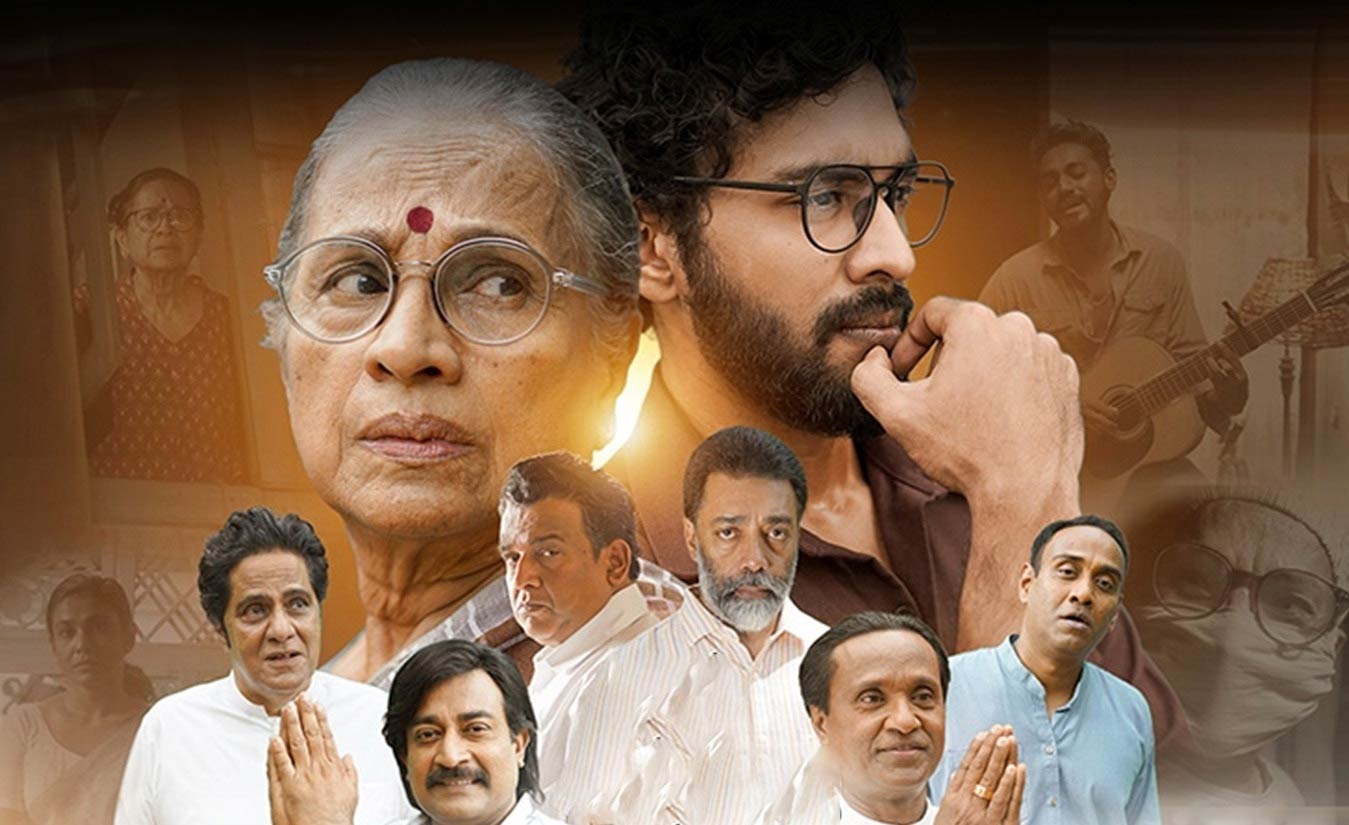
by Anushka Kahandagamage
Unlike Manorani, mothers in both the North and South, whose children disappeared, had no means of reaching out to a state minister in the dead of night, begging for help or even sharing the devastating news of their children’s abduction. They did not have the privilege of calling on influential figures to intervene in their grief. This contrast does not lessen my empathy for Manorani, but rather highlights that a mother’s pain is universal, despite societal divisions or hierarchies. A thought that has been occupying my mind since the making of Rani is why a film is being made about Manorani when so many mothers in this country have lost their children. As Malathi de Alwis highlights, many women involved in the Mothers’ Front never had the chance to take the stage, which was controlled by men. Malathi also argues that Manorani’s special opportunity on that stage was due to her professional background as a medical doctor and her elite status.
Powerful Cinematic Experience
Rani, undoubtedly a powerful cinematic experience, left me frozen, its impact lingering within me. It took me back to the 1987-89 period, a time of terror, when I was just a first grader. The trauma from that era has stayed with our generation ever since. The film brought back events that were slowly fading from my memory, yet still lingered in my nightmares.
Challenging the official memory
Handagama and others involved in the making of the film succeeded in bringing a dark period, which was absent from history books, into the public consciousness or I would say, to the popular discourse. The official memory crafted by the then government regarding this horrifying chapter of history is mostly one-sided, glorifying the rulers while carefully erasing stories that do not align with their narrative. The film uncovers the painful truths, complicating the official narrative constructed by the government. It reveals that history is far more intricate than the simplified version presented in state-crafted accounts.
Subtitles
Creating a film about a dark chapter of the past, one that isn’t recorded in history books, and making it resonate with the public is a formidable challenge. However, the increasing number of people attending the film is a testament to its success. A common challenge faced by artistic films or those addressing complex social issues is their lack of popularity, which often prevents them from entering collective memory. Yet, Rani has effectively overcome this obstacle, achieving both widespread attention and relevance. While the film has undoubtedly succeeded in establishing itself within popular discourse and bringing attention to a dark, often overlooked period in history, the absence of Sinhala and Tamil subtitles presents a significant drawback. These subtitles would have made the film more accessible to a broader audience, particularly those who are directly impacted by the events depicted. Without them, a large segment of the population, including Sinhala and Tamil speakers, may have found it difficult to fully engage with the content and its emotional depth. Subtitles could have enriched the film’s reach and impact, fostering a deeper understanding of the complex and painful history that the movie seeks to bring to light.
Female protagonist
Making a woman the protagonist is an essential reflection of contemporary demands in cinema. Across the globe, there has been a significant shift toward promoting gender equality in film, with an increasing emphasis on strong, multifaceted female characters. This demand is not only a response to the changing social dynamics but also an effort to give a voice to women whose stories have often been sidelined in mainstream narratives. The focus on female protagonists ensures that audiences see a more balanced and inclusive reflection of society on screen.
The Ending and Accountability
The film would have had a more impactful conclusion if it had ended with the peaceful scene of the two women and the child on the beach. This moment was emotionally powerful and seemed like the natural conclusion to the story. However, the final sequence where the police officers are in their casual clothes, drunk and plotting the abduction of Richard, drags on far too long and felt like forcefully imposed. Instead of taking the audience to a peaceful ending, it inadvertently starts to irritate the audience due to its excessive length, detracting from the overall emotional tone of the film. As previously mentioned, the prolonged nature of this scene feels unnecessary and could have been condensed or omitted to maintain the film’s pace and emotional resonance.
In this final scene, perhaps the filmmaker intended to highlight the multiplicity of narratives (as is common in the post-modern era), but it fails in many ways. I strongly object to this scene, as it makes the rulers unaccountable for the murders and reduces the event to a toxic masculine portrayal of the police officers involved.
Features
Excellent Budget by AKD, NPP Inexperience is the Government’s Enemy
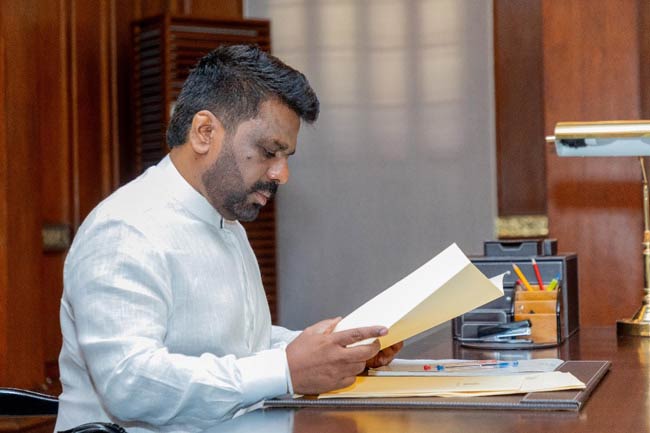
by Rajan Philips
President Anura Kumara Dissanayake has delivered an excellent first budget. It could easily be described as the best budget so far this century and presented in the most dire economic circumstances in Sri Lanka’s modern history. Following his consummate performance in parliament, the President waded into a post-budget forum and joined the country’s economic experts to “dissect new Govt’s maiden budget,” as headlined by the Daily FT, one of the sponsors of the event. Whether one agrees with him or not, there is no question that AKD has been listening to those who knows the subject, has diligently done his homework on the budget file, and knows what he is doing,.
The problem he faces is that he cannot be doing homework on every file for the entire government, and he must find a way to quickly address the collective inexperience of his cabinet. He should not let this inexperience become the enemy that kills the government from within. Hopefully, he will find a way to address this within the framework of the budget and in the delegation of ministerial responsibilities for its implementation.
Somewhere in the budget, the President refers to economic decentralization, to deconcentrate the top heavy Western Province. Unfortunately, the corollary of political decentralization could not find its place in the text. Equally important, the President should also pay attention to ‘cabinet federalisation’ (AJ Wilson’s description of one of DS Senanayake’s quite a few master traits), and more so as he moves ahead to implement the budget proposals.
Ultimately, the success of the budget will be measured in political terms. Read, electoral terms. AKD’s and NPP’s detractors will be winding themselves for political wrestling in the local and later the provincial council elections. The NPP could be expected to hold its ground, but not necessarily all two-thirds of it. It should not at all be strange if the NPP gains ground in the North and East even as it loses some of it in the South. To keep the inevitable losses to the minimum, the government must eschew any and all complacency, which, modifying Mao’s famous Redbook take on it, could be described as the enemy of elections.
Geopolitically, paraphrasing the French Marxist Regis Debray, the NPP government must have its overhead antennas fully alert, but its feet firmly planted on the ground in Sri Lanka. The government cannot avoid being distracted by the global tumults that Donald Trump is creating day in and day out. There will be ripples, even waves, around Sri Lanka depending on what the Modi government decides to do in India to harmonize with the Trump Administration in Washington. Even so, the government’s primary preoccupation in the context of the turmoil in America should be to protect for as long as possible Sri Lanka’s exports to the US which are significant for Sri Lanka’s forex earnings.
At the same time, and consistent with the budget objectives, even as it diversifies its exports the government must diversify its importers. For the next four years, as Trump unfolds his madness, there will be responsive realignments in the Global North even as there will be reconsolidations in the Global South. The NPP government will have to navigate Sri Lanka through these currents without being smothered by them.
There are of course the self-proclaimed Rajapaksa nationalists who want to hitch their broken political wagons in Sri Lanka to the passing hegemon in America. They are in fact ethno-narcissists just like – but writ-small – the racial narcissist that Trump is. Ridiculous as these forces and their politics might seem, indeed as they are, the government should not underestimate their potential to do harm even by accident. Look at Bangladesh to see how political fortunes can dissipate fast, even though the NPP government is in no way comparable to Sheikh Hasina’s rotten government. The eternal home truth is the quick rise and the quicker fall of Gotabaya Rajapaksa.
Setting the Budget Context
The budget speech outlines as its backdrop the 2022 economic crisis that has now become the Rajapaksa era legacy, and as its context the overwhelming verdict of the people in the 2024 presidential and parliamentary elections. In this context, the President calls the budget both “historic” and “challenging,” because the government has to not only lay the foundation for fulfilling the people’s aspirations, but also to dispel “the wrongful picture (of us) created by the myths and malicious political propaganda against our economic policy and vision.” “We have succeeded in that,” the President asserted.
The government has proved its expectant critics wrong and stabilized the economy. All the indicators confirm that – the relatively stable exchange rate at one USD for LKR 300, and not LKR 400 as recklessly scare mongered; the lowering of the Treasury bill rate (8.8%) and getting inflation under control; forex reserves rising past USD six billion; finalizing agreements over debt-restructuring; and most of all keeping essential goods available and avoiding queues. In fairness, the credit for starting the process of economic stabilization belongs to Ranil Wickremesinghe, but post-election expectations in political circles have been that things will start to unravel due to NPP’s inexperience and even incompetence. That did not happen, and President AKD and the NPP government are justified in claiming credit for it.
Mr. Wickremesinghe may have even fancied that another economic crisis this time under an NPP government would give him a second kick at the can of power. No such luck. RW is now part of a team of exes – former ministers and presidents including Maithripala Sirisena – trying to figure out a way to stay relevant in today’s politics. Looking at this aging crowd outside parliament and its slightly younger version in the opposition within parliament, the NPP might fancy its chances of retaining power for more than one cycle of elections. But what the NPP has to contend with ultimately will not be ill equipped politicians but a frustrated electorate.
Apart from President AKD’s versatile feats, the NPP government has little to show to keep the people contented. Recurring rice shortage, the shortfall in coconuts, and the power outage blamed on a monkey tripping off a transformer have certainly taken the shine off the government. Looked from the other end, rice, coconuts and the power outage seem to the only shortcomings that the government is being picked on by media pundits and the political class. But what should concern the NPP government is that any one of them (rice, coconut or power), all of them together, or any similar shortages or failures, are enough to rile the people and bring down a government. Not long ago, it was called aragalaya.
Budget as Political Reset
The budget speech lays down the principles underlying the government’s approach to the economy: sectoral growth sustained by participation and even distribution on the supply side; and balancing roles for the market and the government on the demand side. A GDP growth rate of 5% is targeted for the medium term, predicated on a strong export sector performance while maintaining price stability and ensuring social welfare. Promoting investments, leveraging logistics, revamping tourism, digital transformation of the economy, and unleashing SME potentials through new credit structures are highlighted as the main growth poles. Allocations for health, education, food security, and social benefits are intended to rebuild and strengthen country’s social welfare system.
There is emphasis on Regional Development, including the assurance of special programmes for the Eastern Province, the Malayaga Tamils, and the Northern Province, but there is no mention of Provincial Councils and Local Government bodies and their agency roles in regional development. Regional industrial zones are identified including the promotion of Chemical Manufacturing in Paranthan, KKS and Mankulam in the Northern Province, Galle in the South and Trincomalee in the East. If some of them were to materialize the North and East might be seeing state sponsored industrial activity after more than 70 years when GG Ponnamabalam was Minister of Industries and Fisheries.
Auto Parts and Rubber Products manufacturing is also identified for promotion through industrial zones. What is not clearly indicated is whether new regional industrial initiatives will be tied to the export sector without which they may not be viable, as past experience has shown. Also, on the export front there is no identification of specific products and target markets to match the significant export sector growth that is being championed. Generally, for industries, there should be guardrails for minimizing and mitigating adverse environmental effects.
The budget rightly focuses on the modernization of public transport. Specific projects are identified for bus transport in Colombo and for the rail sector, including the revamping and the extension of the KV Line, multi-modal transport terminal in Kandy, and the expansion of the Thambuththegama Railway Station to function as a hub for transporting agricultural products. Large scale transport projects and rail transport are invariably the responsibility of the central government, but bus transport operations including those in Colombo and Kandy are better assigned to provincial and even larger municipal governments.
The budget provides for settling the legacy debt of the Sri Lankan Airlines (SLA) in the hope that SLA would hereafter become a viable enterprise. For other SOEs, the budget is proposing the setting up of a Holding Company again with the hope of revitalizing the mostly under-performing State Owned Enterprises (SOEs). Whether this approach is motivated by patriotic sentiments or political calculations, there is little support for it from past experience, except for enterprises in the crucial servicing and energy sectors.
The budget gets quite specific in its proposals for the agricultural and food sectors, especially rice and coconuts. At long last, there is official admission at the highest level that there is no data and information system for the “entire value chain” from paddy production to rice consumption. There is no immediate solution to this except the assurance to find one through the ADB funded “Food Security Livelihood Emergency Assistance Project” and a related World Bank project.
Coconuts are easy to count and difficult to hide. Some 4,500 million nuts are the projected demand for 2030, with 2,700 for the coconut industry and 1,800 for household consumption – at one per household per day. The problem is with production and the budget is allocating money for high yielding seedlings to be used in a new Northern Coconut Triangle extending from the coconut rich Northwestern Province, recommended by the Coconut Research Institute and mirror imaging the long established Southern Coconut Triangle. Better later than never, even when it comes to nuts.
All in all, the budget provides a good framework for the NPP government to reset its political road map. To succeed, the resetting must involve delegations at the ministerial level and following through to local communities and political grassroots. Equally important will be the medium in between, and the challenge to the NPP government is in resurrecting and using the currently defunct provincial and local government agencies.
-

 News6 days ago
News6 days agoCommercial High Court orders AASSL to pay Rs 176 mn for unilateral termination of contract
-
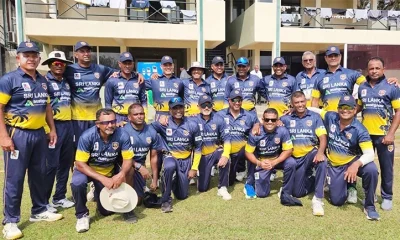
 Sports5 days ago
Sports5 days agoSri Lanka face Australia in Masters World Cup semi-final today
-

 Features7 days ago
Features7 days agoDoing it in the Philippines…
-
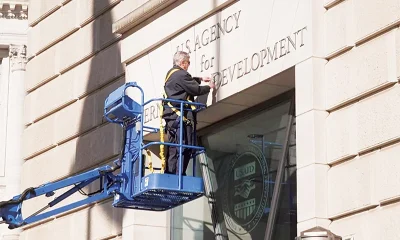
 Features7 days ago
Features7 days agoUSAID and NGOS under siege
-

 Midweek Review6 days ago
Midweek Review6 days agoImpact of US policy shift on Sri Lanka
-
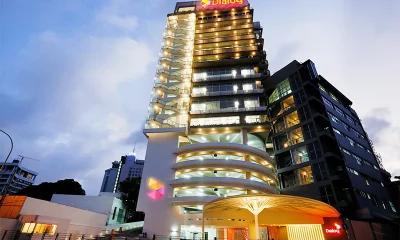
 Business7 days ago
Business7 days agoDialog delivers strong FY 2024 performance with 10% Core Revenue Growth
-
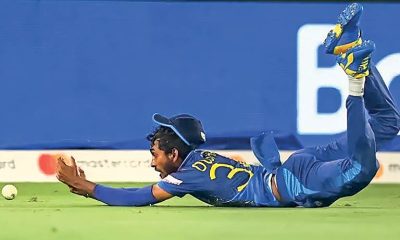
 Sports2 days ago
Sports2 days agoHow Sri Lanka fumbled their Champions Trophy spot
-

 News5 days ago
News5 days agoCourtroom shooting: Police admit serious security lapses


